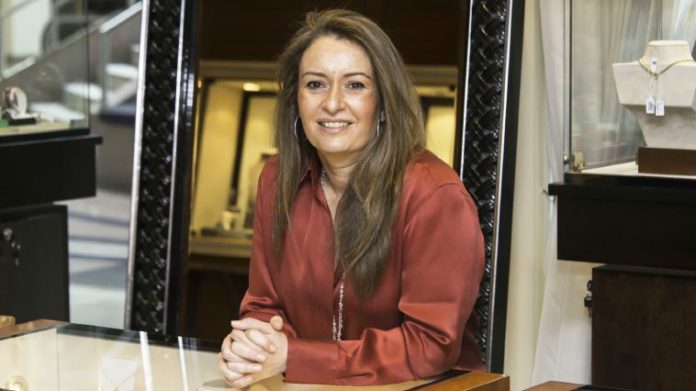Now an executive board member overseeing day to day management of the business, things were very different when she joined the family firm back in 1992. She explains: “My father was not keen on having a woman working in the store. There were three men and they ran the show.
“There was certainly resistance. But I’m stubborn and it was what I wanted!
“Basically, in the old days it was a man’s world and men dealt with men. It was uncomfortable for a woman to walk into that environment; we didn’t have much of a female clientele. That all changed when I started the corner store in the Sheraton. We introduced more daily-wear jewellery, not the sets that they used to buy. We had individual pieces and more brands. Tiffany and Co was one of the first companies in there and then we started with home accessories, so the whole identity of the store changed.
“So, while the men still went to the main store, BJC, women started coming to me, so we opened the doors up a little bit more and made it a more women-friendly environment. Whereas, before, men would go to the store and take things home to show their family, now women themselves are buying. That’s the shift, women are walking in. There are a few men who come and surprise their women, but not as much as they used to.
“I must say that, initially, even women were resistant to dealing with female sales staff. But times have changed; I think you just have to give people a chance.”
Dina says a big part of her role is gauging her clientele. She explains: “I enjoy dealing with people and I enjoy buying, and buying specifically, because you really need to know your clientele to be able to buy a piece. You probably pre-purchase the item thinking that so and so will buy it, and they do; so you really need to know your clientele.”
How much of it is psychology and how much salesmanship? “I think it’s pretty much equal,” says Dina. “But psychology plays a big role and I noticed that very much at the beginning because women enjoyed coming and viewing, chatting, having tea and discussing life.”
And, of the role of fashion trends in the business? Despite her strong feeling that “Jewellery is Forever”, Dina acknowledges that the trade has to adapt to the market, saying: “There was a time that we only had yellow gold, then people wanted white gold. So, we had to buy an inventory of white gold. Now people want pink gold. So, what happens is, yes, you do sell but you do have a back stock also of items. But then it’s jewellery, and jewellery is forever. If I bought a piece in 1990, the same piece today will have almost doubled in price – so, you keep what you have.
“I definitely believe that you should buy things you can wear every day, not things to put away in the safe. Enjoy your jewellery, things that you can hand down to your daughters. I would definitely say my advice would be jewellery is forever, it can be an heirloom but you should also be able to wear it.”


































